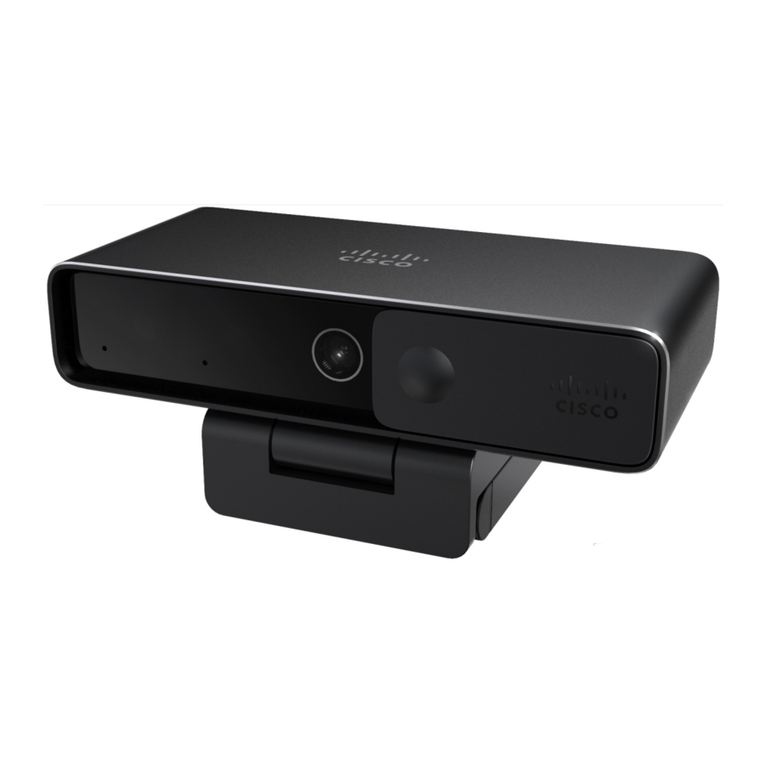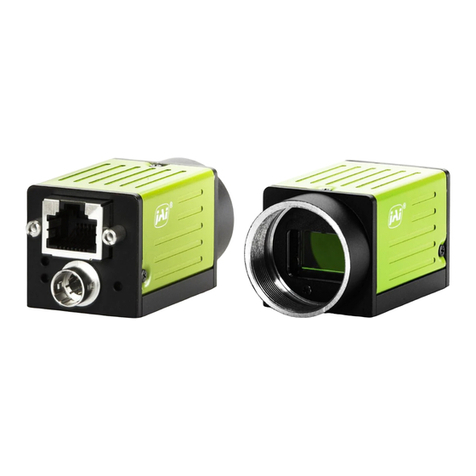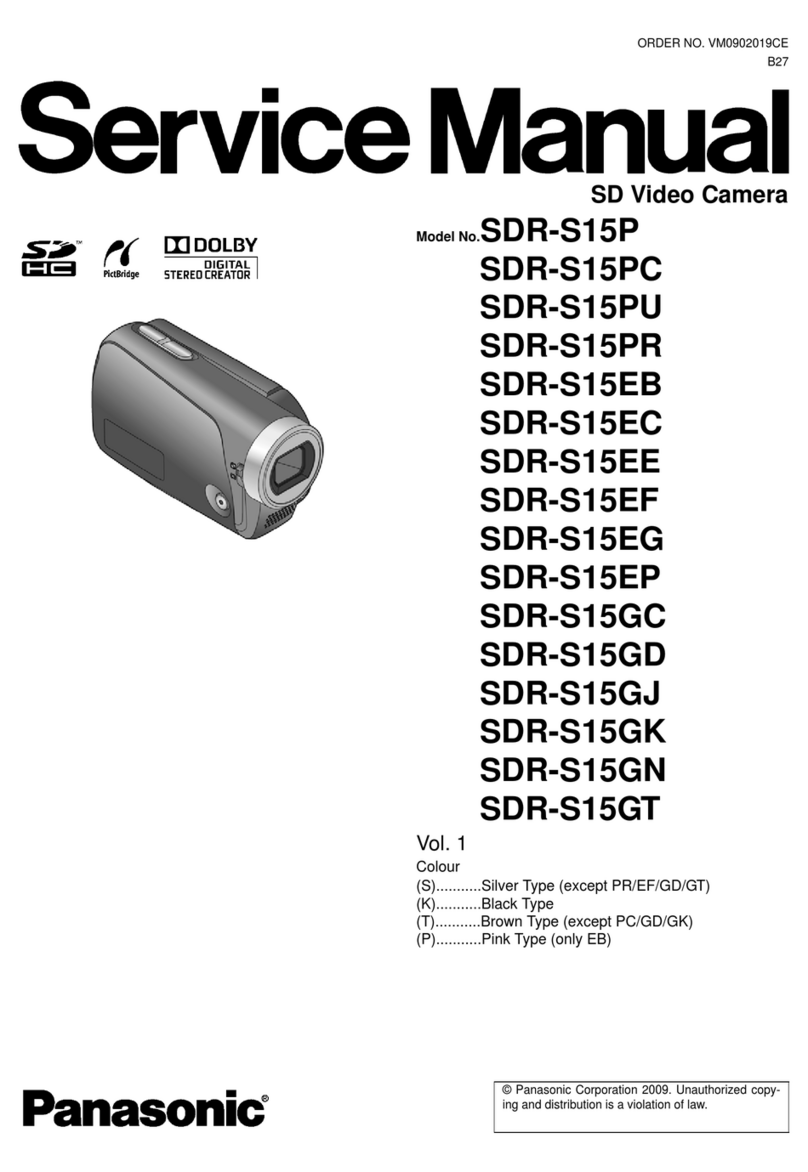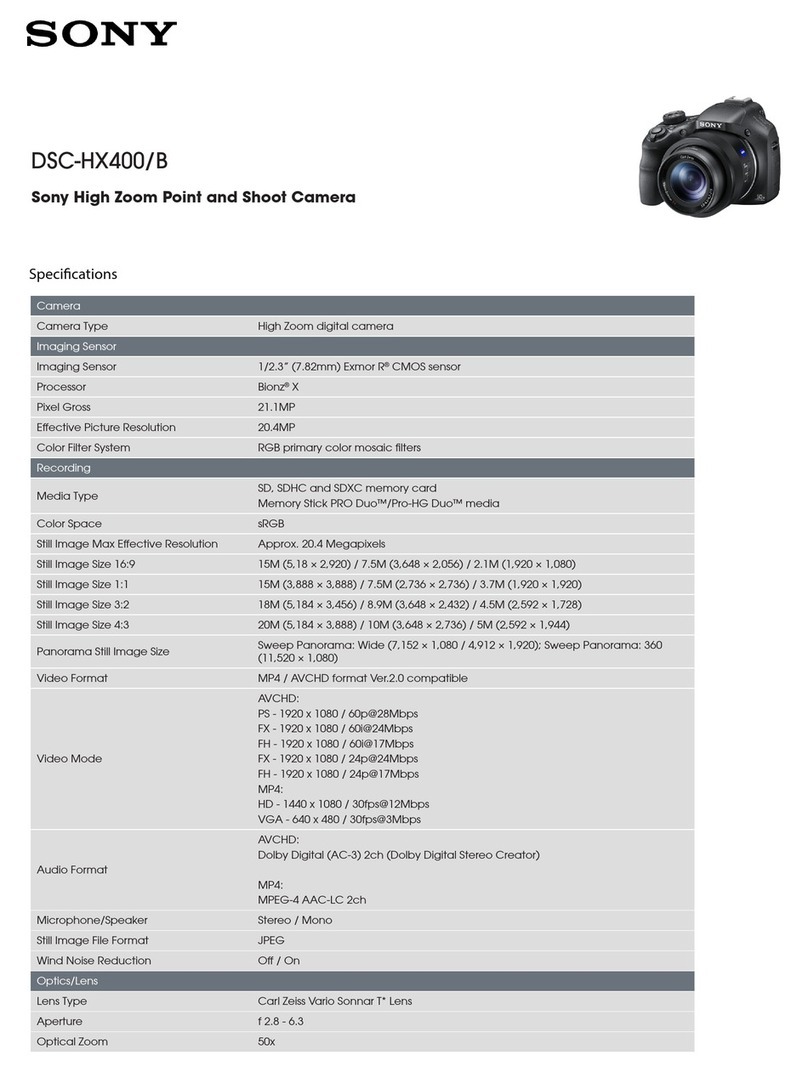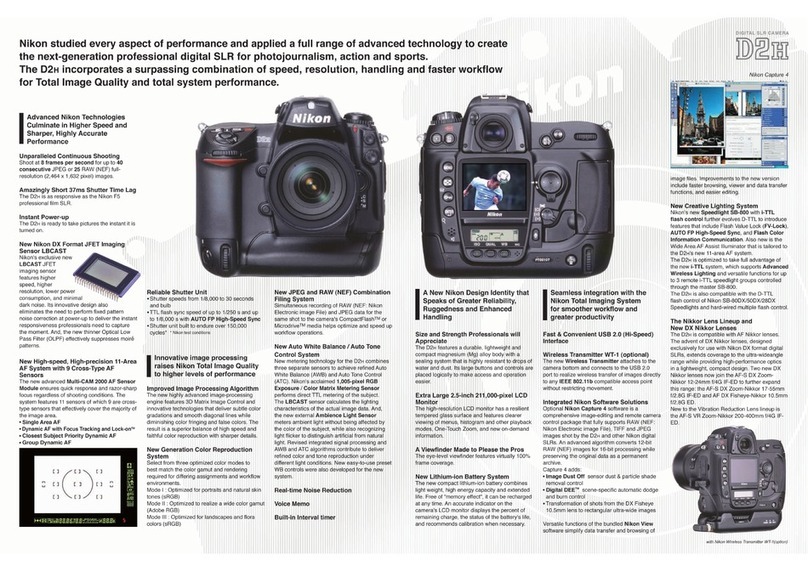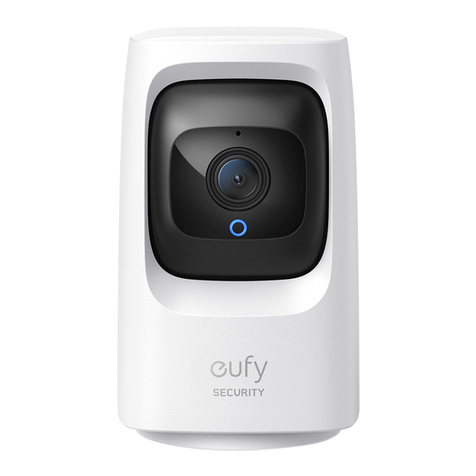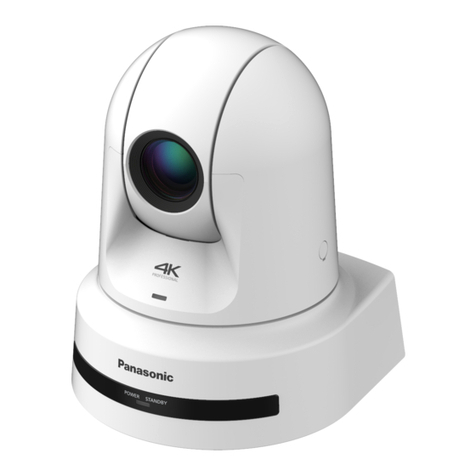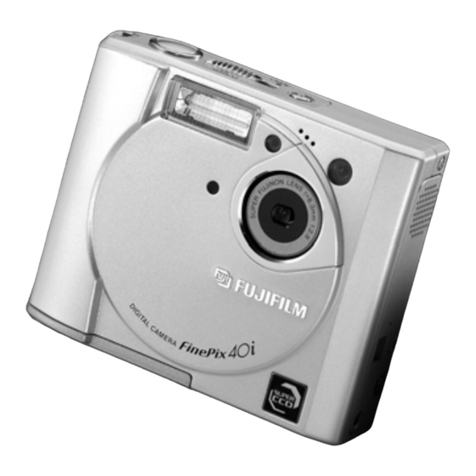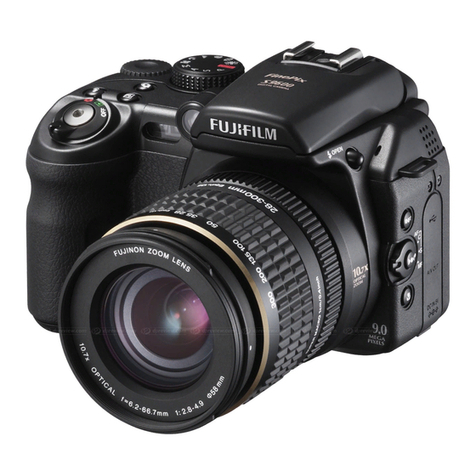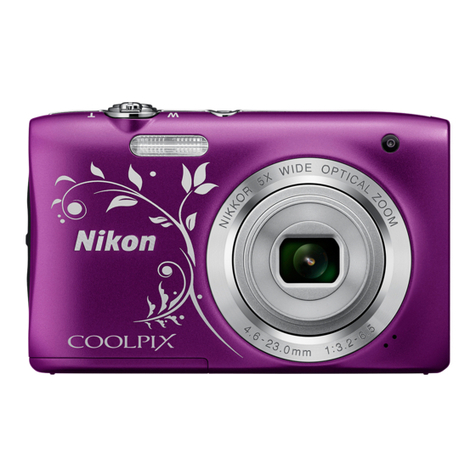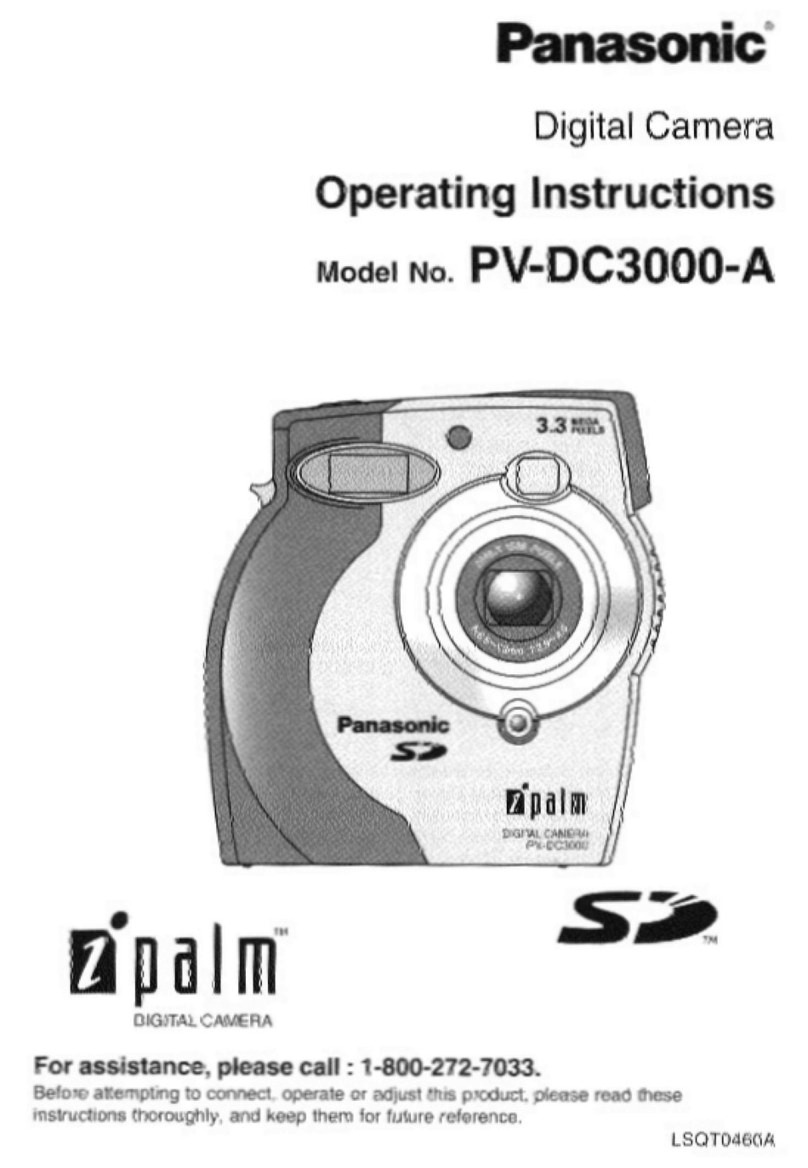EVT EC5000 User manual

EyeCheck 5xxx
Specification
EVT GmbH, Haid-und-Neu-Str. 7, 76131 Karlsruhe, Germany .evt- eb.com, info@evt- eb.com
Tel.: 0049 721 668 004 23 0

Contents
1. Feature..............................................................................................................................................3
2. Application.......................................................................................................................................4
2.1 Application.................................................................................................................................4
2.2 Application Diagram..................................................................................................................5
3. Specification.....................................................................................................................................5
3.1 Product Model – Camera...........................................................................................................5
3.2 Product Model – I O Module.....................................................................................................6
3.3 Product Model LED Illuminator................................................................................................7
3.4 Specifications.............................................................................................................................7
3.5 System Block Diagram..............................................................................................................9
4. Interface – Camera.........................................................................................................................10
4.1 Ports on Panel..........................................................................................................................10
4.2 Internal USB 2.0 Port...............................................................................................................11
4.3 LED Drivers.............................................................................................................................11
5. Interface – I O Module...................................................................................................................11
5.1 Camera Port.............................................................................................................................12
5.2 Power Port................................................................................................................................12
5.2.1 Power Input......................................................................................................................12
5.2.2 Trigger Input....................................................................................................................12
5.2.3 LED Driver output...........................................................................................................13
5.3 General Input Port....................................................................................................................13
5.4 General Output Ports...............................................................................................................14
5.5 RS232 Ports.............................................................................................................................16
5.6 Ethernet Port............................................................................................................................16
5.7 USB2.0 Ports...........................................................................................................................16
5.8 Power Button...........................................................................................................................16
6. Functions Instructions....................................................................................................................16
6.1 Shutter Time.............................................................................................................................17
6.1.1 Minimum Shutter Time....................................................................................................17
6.1.2 Maximum Shutter Time...................................................................................................17
6.2 LED Drivers.............................................................................................................................17
6.3 Trigger Input............................................................................................................................18
6.3.1 Active Trigger Edge.........................................................................................................18
6.3.2 Input Signal Glitch Filter.................................................................................................18
6.3.3 Trigger Delay...................................................................................................................18
6.3.4 Delayed Triggering..........................................................................................................18
6.4 General input............................................................................................................................18
6.4.1 Active Triggering Edge....................................................................................................18
6.4.2 Input Signal Glitch Filter.................................................................................................18
6.4.3 Input Delay.......................................................................................................................18
6.5 General Output.........................................................................................................................19
6.6 Camera Recovery.....................................................................................................................19
7. Dimensions.....................................................................................................................................20
EVT GmbH, Haid-und-Neu-Str. 7, 76131 Karlsruhe, Germany .evt- eb.com, info@evt- eb.com
Tel.: 0049 721 668 004 23 0

1. Feature
1. Intel ATOM CPU inside (E3845 @ 1.91 GHz, quad-core, 64-bit)
2. 4G-Byte DRAM, 64G-Byte storage, soldered on board
3. 64-bit OS: Windo s 10 IoT Enterprise, Linux (Ubuntu)
4. Global Shutter CCD/CMOS, resolution from 0.3 MP to 12 MP
5. HDMI display port
6. 2 programmable constant current LED drivers
7. Free standard accessories: I/O module and connecting cables
8. Rock-solid system stability, operating temperature from -40°C to +80°C
EVT GmbH, Haid-und-Neu-Str. 7, 76131 Karlsruhe, Germany .evt- eb.com, info@evt- eb.com
Tel.: 0049 721 668 004 23 0

2. Application
2.1 Application
•Surface inspection, High-accuracy measuring
•OCR, Bar code, DMC, QR recognition
•Matching, Classification
2.2 Application Diagram
EVT GmbH, Haid-und-Neu-Str. 7, 76131 Karlsruhe, Germany .evt- eb.com, info@evt- eb.com
Tel.: 0049 721 668 004 23 0

3. Specification
3.1 Product Model – Camera
Model Type Resolution Max.
FPS Shutter Sensor Description
EC5000 Mono 640x480 120 Global SHARP CCD RJ33B4AA0DT, 1/3", 7.4um
EC5000c Color 640x480 120 Global SHARP CCD RJ33B3AA0DT, 1/3", 7.4um
EC5010 Mono 640x480 200 Global SHARP CCD RJ33B4AA0DT, 1/3", 7.4um
EC5010c Color 640x480 200 Global SHARP CCD RJ33B3AA0DT, 1/3", 7.4um
EC5200 Mono 1280x960 30 Global SHARP CCD RJ33J4CA0DT, 1/3", 3.75um
EC5200c Color 1280x960 30 Global SHARP CCD RJ33J3CA0DT, 1/3", 3.75um
EC5300 Mono 1280x1024 105 Global ONSEMI CMOS NOIP3SN1300A, 1/2", 4.8um
EC5300c Color 1280x1024 105 Global ONSEMI CMOS NOIP3SE1300A, 1/2", 4.8um
EC5400 Mono 1616x1232 50 Global SHARP CCD RJ31N4AD0DT, 1/1.8", 4.4um
EC5400c Color 1616x1232 50 Global SHARP CCD RJ31N3AD0DT, 1/1.8", 4.4um
EC5410c Color 1616x1232 15 Global SONY CCD ICX274AQ, 1/1.8", 4.4um
EC5500 Mono 2048x1536 55.6 Global SONY CMOS IMX265LLR, 1/1.8", 3.45um
EC5500c Color 2048x1536 55.6 Global SONY CMOS IMX265LQR, 1/1.8", 3.45um
EC5600 Mono 2448x2048 15 Global SHARP CCD RJ32S4AD0DT, 2/3", 3.45um
EC5600c Color 2448x2048 15 Global SHARP CCD RJ32S3AD0DT, 2/3", 3.45um
EC5610 Mono 2456x2048 35.7 Global SONY CMOS IMX264LLR, 2/3", 3.45um
EC5610c Color 2456x2048 35.7 Global SONY CMOS IMX264LQR, 2/3", 3.45um
EC5700 Mono 3072x2048 30 Rolling SONY CMOS IMX178LLJ, 1/1.8", 2.4um
EC5700c Color 3072x2048 30 Rolling SONY CMOS IMX178LQJ, 1/1.8", 2.4um
EC5900c Color 4000x3000 20 Rolling SONY CMOS IMX226CQJ, 1/1.7", 1.85um
EVT GmbH, Haid-und-Neu-Str. 7, 76131 Karlsruhe, Germany .evt- eb.com, info@evt- eb.com
Tel.: 0049 721 668 004 23 0

3.2 Product Model – I/O Module
Model E -M100A
Description EyeCheck 5xxx Series Industrial Smart Camera I/O Module
3.3 Product Model LED Illuminator
Model olor Wave Length or olor
Temperature
Beam Angle Max. Driving
urrent
EC-LW45 White 6500K 45° 300mA
EC-LW90 White 6500K 90° 300mA
EC-LR60 Red 624nm 60° 100mA
EC-LY60 Yello 590nm 60° 100mA
EC-LG60 Green 525nm 60° 100mA
EC-LB60 Blue 470nm 60° 100mA
EC-LI60 IR 850nm 60° 100mA
EVT GmbH, Haid-und-Neu-Str. 7, 76131 Karlsruhe, Germany .evt- eb.com, info@evt- eb.com
Tel.: 0049 721 668 004 23 0

3.4 Specifications
PU Model Intel ATOM CPU E3845
PU Type Quad-core 1.91GHz, 64-bit x86
L2 ache 2M-byte
GPU Support DirectX11, OpenGL3.0, OpenCL1.2
Memory 4G-byte DDR3L-1333 (solder on board)
Storage 64G-byte eMMC5.0 Flash (solder on board)
Ethernet One Gigabit Ethernet by Intel I210 controller
USB Three USB 2.0 ports
One internal USB 2.0 (inside camera casing, dedicated for USB dongle)
Monitor Port One HDMI port, support resolution from VGA (640x480) to 1080P
Serial Port T o 9-pin RS232 ports ith TX/RX signal only
Trigger Input One isolated trigger input (5V/12V/24VDC supported)
General Input Eight photo-isolated input ports (5V/12V/24VDC supported)
General Output Eight photo-isolated output ports (Max current 0.3A, Max voltage 40VDC)
LED Driver T o constant current LED drivers, output current adjustable:
Internal LED driver only supports EVT LED board, ith max output 0.3A/24V
External LED driver (in IO module) supports general LED illuminator, ith
max output 1.5A/24V
LED Indicator Five red/green indicators: Po er, LAN and three user-defined LEDs
Delayed
Triggering
Delayed triggering is supported:
Up to 32 delayed instances, each instance can be delayed up to 60 seconds,
time precision: 1 microsecond
Watchdog Hard are Watchdog timer (1 to 256 second adjustable)
Encryption Unique chip ID encryption; dedicated encryption chip LKT4300 (soldered on
board)
Temperature
Monitoring
Internal temperature sensor, real-time mainboard temperature monitoring
Remote ontrol WoL (Wake on LAN) supported, remote control via Ethernet
OS (64bit) Windo s 10 IoT Enterprise, Linux (Ubuntu)
Power onsumption 12W Max
Power Supply 20 to 30 VDC (24 VDC recommended), 2A Max
Operation ondition -40°C to +80°C
Storage ondition -40°C to +90°C
Hardware Structure Aluminium alloy casing, fanless design
Dimensions 110 x 61 x 47 mm
Weight 380 g
Standards CE
EVT GmbH, Haid-und-Neu-Str. 7, 76131 Karlsruhe, Germany .evt- eb.com, info@evt- eb.com
Tel.: 0049 721 668 004 23 0
CPU
IO Module
Special Functions

Note:
[1] The po er consumption of the camera is 12W max. Ho ever, it takes more po er
consumption hen using I/O module for external LED driving. So s itching po er ith
over 80W is recommended.
[2] After being placed in the environment of -40°C for 12 hours, the camera can be
started and run for 24 hours. The camera can run for 48 hours in the environment of
+80°C. The camera can run for 48 hours in the cyclic environment (5 hours for a cycle) of
the temperature form -40°C to +80°C.
[3] The RTC runs for 4 eeks by the internal recharged battery, so time value must be set
again hen the camera po er supply is cut off more than 4 eeks.
3.5 System Block Diagram
The block diagram of EyeCheck 5xxx series is as follo s:
EVT GmbH, Haid-und-Neu-Str. 7, 76131 Karlsruhe, Germany .evt- eb.com, info@evt- eb.com
Tel.: 0049 721 668 004 23 0

4. Interface – amera
4.1 Ports on Panel
The EC 5xxx series includes camera and I/O module. They are connected ith a HDMI
cable (5 meters, ith M3 setscre ). This customized cable is soft, ith flexural endurance
and oil resistivity for robot arm and cable chain.
The camera supports standard HDMI display port for displaying on monitor ith HDMI
port, supporting resolution from VGA (640x480) to 1080P.
Notice: the 3-meter HDMI cable ith M3 setscre may not match all monitors because of
the connector size. Some monitors are ensured to match the cable.
The ports for I/O module and HDMI monitor look the same. Ho ever EVT provides fault-
tolerant design hich allo s misplug ithout any damage to the camera.
4.2 Internal USB 2.0 Port
This USB 2.0 port is hidden inside the camera casing. User can use this port only hen
opening the rear panel.
This internal USB port is designed for encryption USB dongle to avoid misplug.
4.3 LED Drivers
EVT provides constant current LED drivers on both, camera and I/O module ith
adjustable current (LED brightness) for machine vision applications, hich reduces system
costs and increases system stability.
The internal LED driver has max output 300mA/24V for EVT-designed illuminator only.
EVT GmbH, Haid-und-Neu-Str. 7, 76131 Karlsruhe, Germany .evt- eb.com, info@evt- eb.com
Tel.: 0049 721 668 004 23 0

5. Interface – I/O Module
5.1 Camera Port
The port marked ith “Camera” is for connection ith the camera. With a customized
cable, the camera can be connected ith I/O module for ports extension. The cable is 5
meter long ith M3 setscre s. Also available 8 meter cable on request.
5.2 Po er Port
The 8-pin port marked “POWER” is the po er port. This connector is compatible ith
16-24 AWG ire. The 8-pin po er port includes po er input, trigger input, LED driver
output and casing Earth.
5.2.1 Power Input
The po er input ports marked ith “0V” and “24VDC”, support 20 to 30VDC (24VDC is
recommended) input. This port supports reverse polarity protection, undervoltage
protection, overvoltage protection and surge protection.
The po er consumption of the camera is 12W max. Ho ever, it takes more po er
consumption hen using I/O module for external LED driving. So po er supply ith over
24V/24 is recommended.
EVT GmbH, Haid-und-Neu-Str. 7, 76131 Karlsruhe, Germany .evt- eb.com, info@evt- eb.com
Tel.: 0049 721 668 004 23 0

5.2.2 Trigger Input
The trigger input port marked ith “TRIG+” and “TRIG-”, is for external triggering signal
like position sensor on production line.
Trigger input is a photo-isolated input, it can input 5V/12V/24VDC signal directly ith no
need for an external current-limiting resistor. -30V to +1V is recognized as lo level, and
+2.8 to +30V is recognized as high level, ith input current belo 2mA; voltage out of
range from -30V to +30V may damage the circuit.
5.2.3 LED Driver output
The ports marked ith “LED+” and “LED-” are for driving general passive LED illuminator.
Please connect LED anode ith “LED+” and connect cathode ith “LED-”.
The max. output voltage is 24V (so it supports LED illuminator under 24VDC), and the
max. output current is 1.5A (1500mA). User can rapidly adjust the current (or brightness
of LED) from 0mA to 1500mA by soft are.
EVT GmbH, Haid-und-Neu-Str. 7, 76131 Karlsruhe, Germany .evt- eb.com, info@evt- eb.com
Tel.: 0049 721 668 004 23 0

5.3 General Input Port
The general input port is a 9-pin port marked ith “INPUT”. It is compatible ith 16-
24AWG ire.
There are 8 photo-isolated general input ports, they can input 5V/12V/24VDC signal
directly ith no need for an external current-limiting resistor. -30V to +1V is recognized as
lo level, and +2.8 to +30V is recognized as high level, ith input current belo 2mA;
voltage out of range from -30V to +30V may damage the circuit.
It is recommended to use PNP output type sensors, s itches or PLC.
EVT GmbH, Haid-und-Neu-Str. 7, 76131 Karlsruhe, Germany .evt- eb.com, info@evt- eb.com
Tel.: 0049 721 668 004 23 0

5.4 General Output Ports
The general output port is a 10-pin port marked ith “OUTPUT”. It is compatible ith 16-
24AWG ire.
There are 8 photo-isolated general output ports (NPN type) for driving resistive load or
inductive load. The ports can sink 350mA/30V current. These ports need no fly- heel
diode hen driving inductive load, because there are zener diodes onboard. The output
saturation voltage Von is less than 0.2V @ 350mA, and leakage corrent Ioff-leek is less than
50uA.
As the concept of relay (definitions of OPEN and CLOSE), the MOSFET does not conduct
hen API sent command OPEN; hen command CLOSE is sent, the MOSFET conducts and
sinks up to 350mA current. The camera default setting is no output (OPEN) hen po er
on.
EVT GmbH, Haid-und-Neu-Str. 7, 76131 Karlsruhe, Germany .evt- eb.com, info@evt- eb.com
Tel.: 0049 721 668 004 23 0

This output delay time may be variable because of OS thread scheduling and user
programming style, usually range from 0.1ms to 1ms.
5.5 RS232 Ports
There are t o RS232 ports (standard DB9 connector) ith mark “RS232-1” and “RS232-
2”. The t o RS232 ports have only RX/TX signals for external devices like PLC, ith
supporting baud rate (bps): 230400, 153600, 115200, 57600, 19200, 9600, 4800, 2400,
600, 300.
5.6 Ethernet Port
There is a Gigabit Ethernet marked ith “GigaEthernet”. This port is used to connect ith
PC or PLC. Also, it can connect ith other GigE cameras. PoE (Po er over Ethernet)
function is not supported.
If orking in Gigabit mode, CAT-6 or CAT-6E cable is recommended for a better
performance. The default IP address is 192.168.1.218.
5.7 USB2.0 Ports
There are three USB2.0 ports marked ith “USB1”, “USB2”, “USB3”. These USB ports are
for connecting keyboard, mouse, USB flash drive and other general USB external devices.
The output po er of each port is 5V/0.5A.
5.8 Po er Button
There is a self-lock push button marked ith “POWER”. The OS is highly customized to
avoid accident from po er failure, hich means all cameras are able to ork on
production line ith frequent po er off ithout shutting do n OS from desktop.
EVT GmbH, Haid-und-Neu-Str. 7, 76131 Karlsruhe, Germany .evt- eb.com, info@evt- eb.com
Tel.: 0049 721 668 004 23 0

6. Functions Instructions
Belo are some instructions of camera special functions for machine vision.
6.1 Shutter Time
6.1.1 Minimum Shutter Time
Like other industrial cameras, the EyeCheck 5xxx has minimum shutter time limit.
Because the features of different CCD/CMOS sensors are different, this minimum value for
different models is different. If using illegal parameters (lo er than the minimum value) to
set shutter time by API, the camera ill set the only according to the minimum value.
Model Minimum Value (us) Note
EC5000 & EC5000c
EC5010 & EC5010c
8
EC5300 & EC5300c 10
EC5200 & EC5200c 17
EC5400 & EC5400c 11
EC5500 & EC5500c 14
EC5610 & EC5610c 14
EC5600 & EC5600c 20
EC5700 & EC5700c 3
EC5900 3
The shutter time is adjustable by microseconds.
6.1.2 Ma imum Shutter Time
The maximum shutter time is 1 second, and it is adjustable by microseconds.
6.2 LED Drivers
Constant current LED drivers on both camera and I/O module are available ith adjustable
current for machine vision applications.
This function can greatly increase the life cycle of LED and reduce the system po er
consumption.
EVT GmbH, Haid-und-Neu-Str. 7, 76131 Karlsruhe, Germany .evt- eb.com, info@evt- eb.com
Tel.: 0049 721 668 004 23 0

6.3 Trigger Input
6.3.1 Active Trigger Edge
The trigger input port accepts rising edge signal or falling edge signal. The default setting
is rising edge signal.
6.3.2 Input Signal Glitch Filter
The input signal glitch filter function is disabled by default.
If this function is enabled, hen the first trigger signal edge is received, system ill
double checks after the glitch filter delay time. Only hen t o results (before and after
glitch filter delay time) are the same can the input trigger be accepted. For general digital
sensors, this function is not recommended. Ho ever, for input trigger from mechanical
s itch, this function is very useful to avoid spurious triggering.
6.3.3 Trigger Delay
The time period bet een trigger signal input and image exposure starting is called
triggering delay.
6.3.4 Delayed Triggering
For some machine vision applications, the triggering sensor is far from the camera,
bet een hich there are several components moving on production lines. In this case,
delayed triggering function is necessary. EyeCheck 5xxx camera supports up to 32 delayed
instances, each instance can be delayed up to 60 seconds, time precision: 1 microsecond.
6.4 General input
6.4.1 Active Triggering Edge
The trigger input port accepts rising edge signal or falling edge signal. The default active
edge is rising edge. It is recommended to use PNP output type sensors, s itches or PLC,
because they can direct interface ith the trigger port.
6.4.2 Input Signal Glitch Filter
The input signal glitch filter function is disabled by default. If this function is enabled,
hen the first trigger signal edge is received, system ill double checks after the glitch
filter delay time. Only hen t o results (before and after glitch filter delay time) are the
same can the input signal be accepted. For general digital sensors, this function is not
recommended. Ho ever, for input trigger from mechanical s itch, this function is very
useful to avoid malfunction. The glitch filter delay time should be set according to the field
tests.
6.4.3 Input Delay
The time period bet een general input and user’s program receiving message is called
input delay. This input delay time may be variable because of OS thread scheduling and
user programming style, usually range from 0.1ms to 1ms.
EVT GmbH, Haid-und-Neu-Str. 7, 76131 Karlsruhe, Germany .evt- eb.com, info@evt- eb.com
Tel.: 0049 721 668 004 23 0

6.5 General Output
As the concept of relay (definitions of OPEN and CLOSE), the MOSFET does not conduct
hen API sent command OPEN; hen command CLOSE is sent, the MOSFET conducts and
sinks up to 350mA current. The camera default setting is no output (OPEN) hen po er
on. This output delay time may be variable because of OS thread scheduling and user
programming style, usually range from 0.1ms to 1ms.
6.6 Camera Recovery
The EyeCheck 5xxx supports recovery function, including BIOS and OS recovery. User can
easily recover the camera to factory default status.
EVT GmbH, Haid-und-Neu-Str. 7, 76131 Karlsruhe, Germany .evt- eb.com, info@evt- eb.com
Tel.: 0049 721 668 004 23 0

7. Dimensions
EVT GmbH, Haid-und-Neu-Str. 7, 76131 Karlsruhe, Germany .evt- eb.com, info@evt- eb.com
Tel.: 0049 721 668 004 23 0
This manual suits for next models
27
Table of contents
Popular Digital Camera manuals by other brands

Panasonic
Panasonic DMC-ZS30 Basic operating instructions

Dukane
Dukane Camera 335 Protocol information

Panasonic
Panasonic AJ-D610WBp Service manual
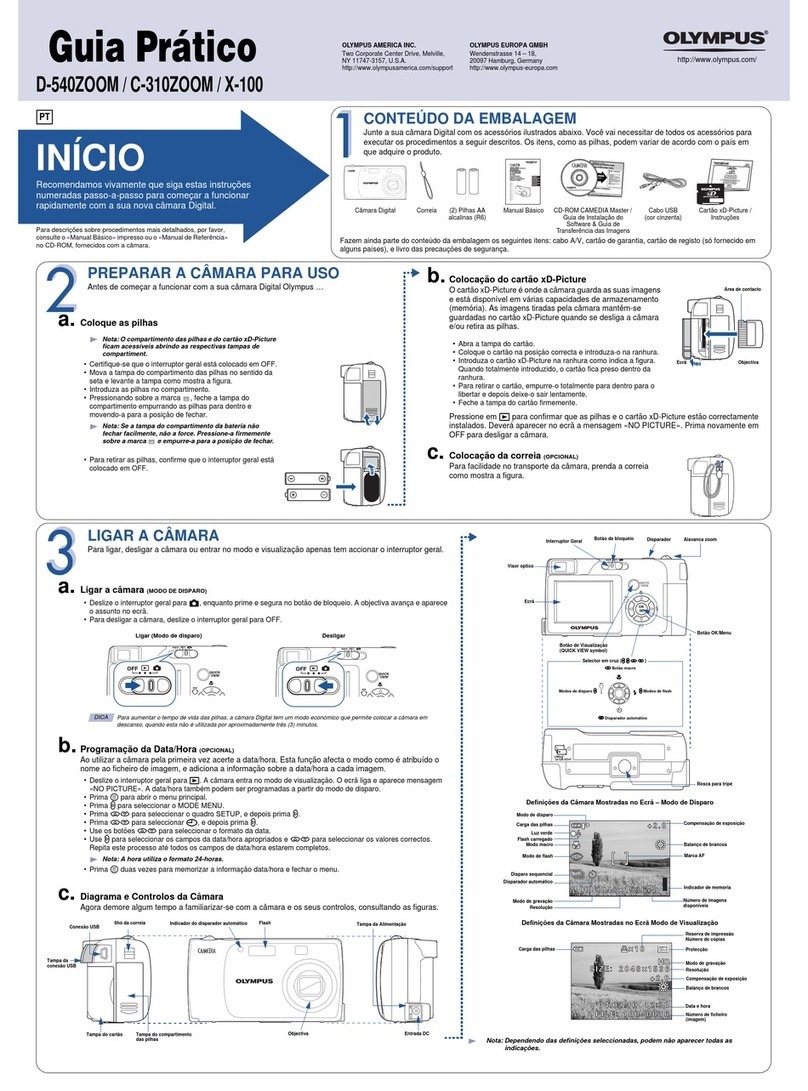
Olympus
Olympus D540 - 3.2 MP Digital Camera quick start guide
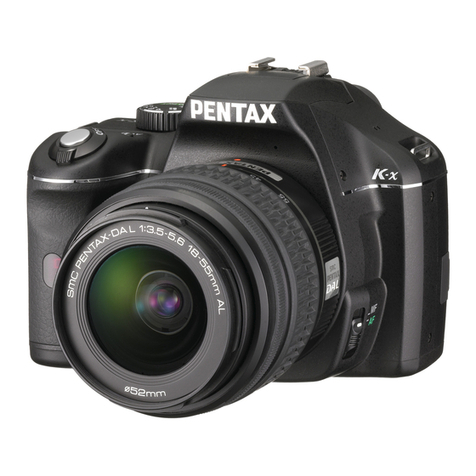
Pentax
Pentax K-X operating manual
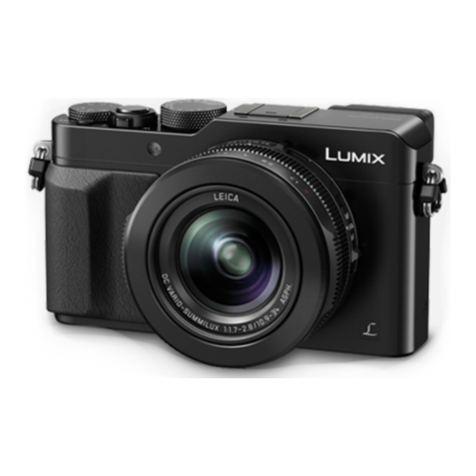
Panasonic
Panasonic LUMIX DMC-LX100GN Basic operating instructions
